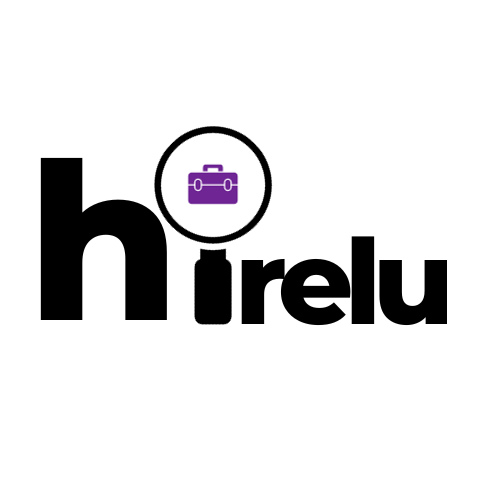A well-written resume is crucial in today’s competitive job market. It serves as your first impression to potential employers and can greatly impact your job search. A resume is a document that summarizes your skills, qualifications, and work experience, and it is often the first thing that employers see when considering candidates for a position. A strong resume can help you stand out from other applicants and increase your chances of landing an interview.
Key Takeaways
- A well-written resume is crucial for job seekers to stand out in a competitive job market.
- Understanding the basics of resume writing, including formatting and content, is essential for creating a strong resume.
- While resume writing services can be expensive, they can be worth the investment for job seekers who need help crafting a standout resume.
- A step-by-step guide can help job seekers create a comprehensive and effective resume.
- Following dos and don’ts, crafting a strong objective statement, highlighting skills and accomplishments, showcasing work experience, and formatting for maximum impact are all important elements of a successful resume.
Understanding the Basics of Resume Writing
A resume is a concise document that provides an overview of your professional background and qualifications. There are different types of resumes, including chronological, functional, and combination formats. The chronological format lists your work experience in reverse chronological order, starting with your most recent job. The functional format focuses on your skills and abilities rather than your work history. The combination format combines elements of both the chronological and functional formats.
Key components of a resume include your contact information, objective statement or summary, work experience, education, skills, and any relevant certifications or achievements. It is important to tailor your resume to each job you apply for by highlighting the skills and experiences that are most relevant to the position.
Resume Writing Service: Is It Worth the Investment?
Using a resume writing service can be a worthwhile investment for many job seekers. These services can help you create a professional and polished resume that effectively showcases your skills and qualifications. However, there are pros and cons to consider before deciding whether to use a resume writing service.
One advantage of using a resume writing service is that it can save you time and effort. Writing a resume can be a daunting task, especially if you are not familiar with current industry standards or best practices. A professional resume writer can take the guesswork out of the process and create a document that highlights your strengths and accomplishments.
On the other hand, using a resume writing service can be costly. Prices for these services can vary widely, and it is important to research and compare different options before making a decision. Additionally, some job seekers may prefer to write their own resumes in order to have full control over the content and presentation.
When choosing a resume writing service, it is important to do your research and choose a reputable provider. Look for services that have positive reviews and testimonials from satisfied customers. It can also be helpful to ask for samples of their work to ensure that their writing style and approach align with your needs.
How to Write a Resume: Step-by-Step Guide
| Section | Details |
|---|---|
| Header | Include your name, contact information, and a professional summary |
| Experience | List your work experience in reverse chronological order, including job title, company name, dates of employment, and key responsibilities and achievements |
| Education | List your educational qualifications, including degree, institution, and dates of attendance |
| Skills | List your relevant skills, including technical and soft skills |
| Achievements | List any relevant awards, certifications, or accomplishments |
| References | List at least two professional references, including their name, job title, company, and contact information |
Preparing to write your resume involves gathering all the necessary information and organizing it in a way that is easy to understand. Start by making a list of your work experience, education, skills, and any relevant certifications or achievements. This will serve as the foundation for your resume.
Once you have gathered all the necessary information, you can begin writing your resume. Start with your contact information at the top of the page, including your name, phone number, email address, and LinkedIn profile URL if applicable. Next, include an objective statement or summary that briefly highlights your skills and qualifications.
After the objective statement or summary, list your work experience in reverse chronological order. Include the name of the company, your job title, dates of employment, and a brief description of your responsibilities and accomplishments. Be sure to use action verbs and quantify your achievements whenever possible.
Next, include your education information, starting with the most recent degree or certification you have obtained. Include the name of the institution, degree or certification earned, and dates of attendance.
Finally, include a section for your skills and any relevant certifications or achievements. This is where you can highlight specific skills that are relevant to the job you are applying for.
Once you have written your resume, it is important to edit and proofread it carefully. Check for spelling and grammatical errors, as well as formatting inconsistencies. It can be helpful to have someone else review your resume for feedback and suggestions.
Resume Writing Tips: Dos and Don’ts
When writing your resume, there are several common mistakes to avoid. One of the biggest mistakes is including irrelevant information. Your resume should be focused and tailored to the specific job you are applying for. Avoid including personal information, such as your age, marital status, or hobbies, unless it is directly relevant to the position.
Another common mistake is using generic language and clichés. Instead of using vague phrases like “team player” or “good communication skills,” provide specific examples of how you have demonstrated these qualities in your work experience.
To make your resume stand out, consider including a professional summary or objective statement at the beginning. This can help grab the attention of potential employers and provide a brief overview of your qualifications.
Crafting a Strong Objective Statement

An objective statement is a brief summary of your career goals and what you hope to achieve in your next position. It should be tailored to the specific job you are applying for and highlight your relevant skills and qualifications.
To write an effective objective statement, start by researching the company and job description. Identify the key skills and qualifications that the employer is looking for, and tailor your objective statement to match.
Next, think about your own career goals and what you hope to achieve in your next position. Consider how your skills and experience align with the needs of the employer, and highlight these in your objective statement.
Keep your objective statement concise and focused. Avoid using generic language or clichés, and instead provide specific examples of how you have demonstrated the skills and qualifications that are relevant to the job.
Highlighting Your Skills and Accomplishments
Identifying your skills and accomplishments is an important part of writing a strong resume. Start by making a list of all the skills you possess that are relevant to the job you are applying for. These can include technical skills, such as proficiency in a specific software program, as well as soft skills, such as communication or leadership abilities.
Next, think about your accomplishments and how they demonstrate your skills and qualifications. Consider any projects or initiatives you have led, any awards or recognition you have received, and any measurable results you have achieved.
When showcasing your skills and accomplishments on your resume, be sure to use action verbs and quantify your achievements whenever possible. For example, instead of saying “responsible for managing a team,” say “successfully managed a team of 10 employees, resulting in a 20% increase in productivity.”
Showcasing Your Work Experience
When listing your work experience on your resume, it is important to provide enough detail to give potential employers a clear understanding of your responsibilities and accomplishments. Start with your most recent job and work backwards, listing the name of the company, your job title, dates of employment, and a brief description of your responsibilities.
When describing your responsibilities, be sure to use action verbs and be specific about what you did and the impact it had. For example, instead of saying “responsible for customer service,” say “provided exceptional customer service to over 100 clients per day, resulting in a 95% customer satisfaction rating.”
In addition to listing your responsibilities, be sure to highlight any achievements or accomplishments you had in each position. This can include things like exceeding sales targets, implementing cost-saving measures, or receiving awards or recognition.
Formatting Your Resume for Maximum Impact
Choosing the right format for your resume is important in order to make a strong impression on potential employers. There are several different formats to choose from, including chronological, functional, and combination formats.
The chronological format is the most common and is best suited for those with a consistent work history. It lists your work experience in reverse chronological order, starting with your most recent job.
The functional format is best suited for those with limited work experience or those who are changing careers. It focuses on your skills and abilities rather than your work history.
The combination format combines elements of both the chronological and functional formats. It lists your work experience in reverse chronological order, but also includes a section for your skills and qualifications.
When formatting your resume, it is important to keep it clean and easy to read. Use a professional font, such as Arial or Times New Roman, and keep the font size between 10 and 12 points. Use headings and bullet points to organize information and make it easy to scan.
Final Thoughts: Putting Your Best Foot Forward with Your Resume
In conclusion, writing a well-crafted resume is essential in today’s competitive job market. A strong resume can help you stand out from other applicants and increase your chances of landing an interview. By understanding the basics of resume writing, using a resume writing service if necessary, and following best practices for formatting and content, you can create a resume that effectively showcases your skills and qualifications. Remember to tailor your resume to each job you apply for, highlight your skills and accomplishments, and make a lasting impression with potential employers.
If you’re looking to improve your resume writing skills, you may be interested in an article titled “Resume Writing Services: How to Craft a Standout Resume” on Hirelu.com. This article provides valuable tips and insights on creating a resume that grabs the attention of employers and helps you stand out from the competition. Whether you’re a recent graduate or a seasoned professional, this article offers practical advice to help you showcase your skills and experience effectively. Check it out here.






0 Comments
[…] Tips for writing a strong objective statement include being specific, concise, and tailored to the job description. […]
[…] are some tips for writing a compelling professional […]